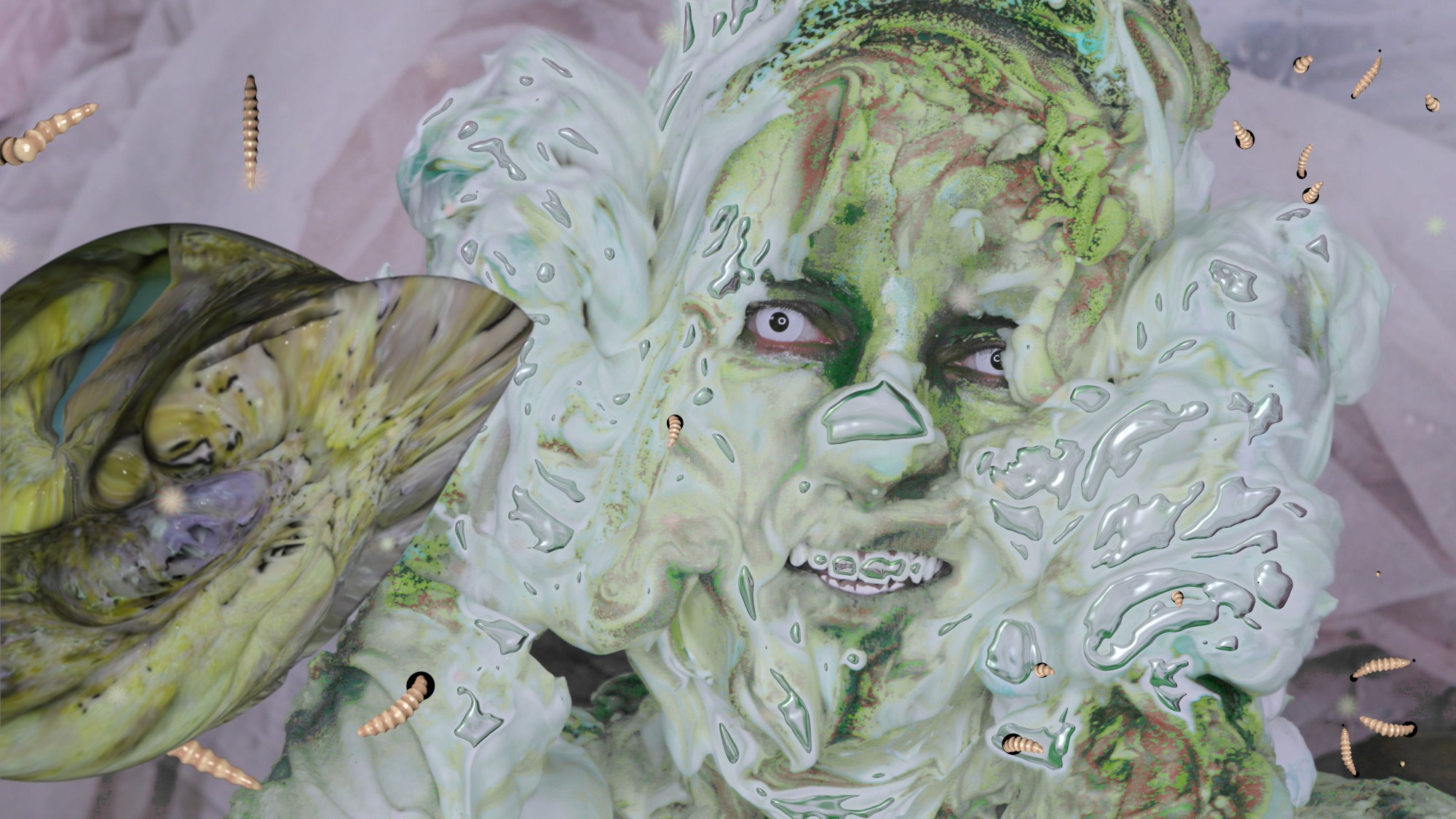In 2017, several major galleries put on queer art shows to celebrate the 50th anniversary of the partial decriminalisation of homosexuality in Britain. The Tate’s Queer British Art 1861 – 1967 and the Walker Art Gallery in Liverpool’s Coming Out: Sexuality, Gender and Identity are just two examples. Some people celebrated the display of diversity and others asked what took so long. The shows also threw up the question of whether it makes sense to group queer artist’s work together, and what constitutes a queer artist anyway.
If those of us who rolled our eyes at this sudden interest in queer artists were worried that the UK would be a barren wasteland of LGBTQ-focussed exhibitions in 2018, it turns out there are lots of amazing new wave queer artists and galleries proving us otherwise. Below you’ll hear from some of the brilliant creatives involved in these shows about what it means to be a queer artist living and working today, whether their queer identity — and the struggles that have come with it — influenced their decision to make work in the first place, and how their queerness shapes their practice.
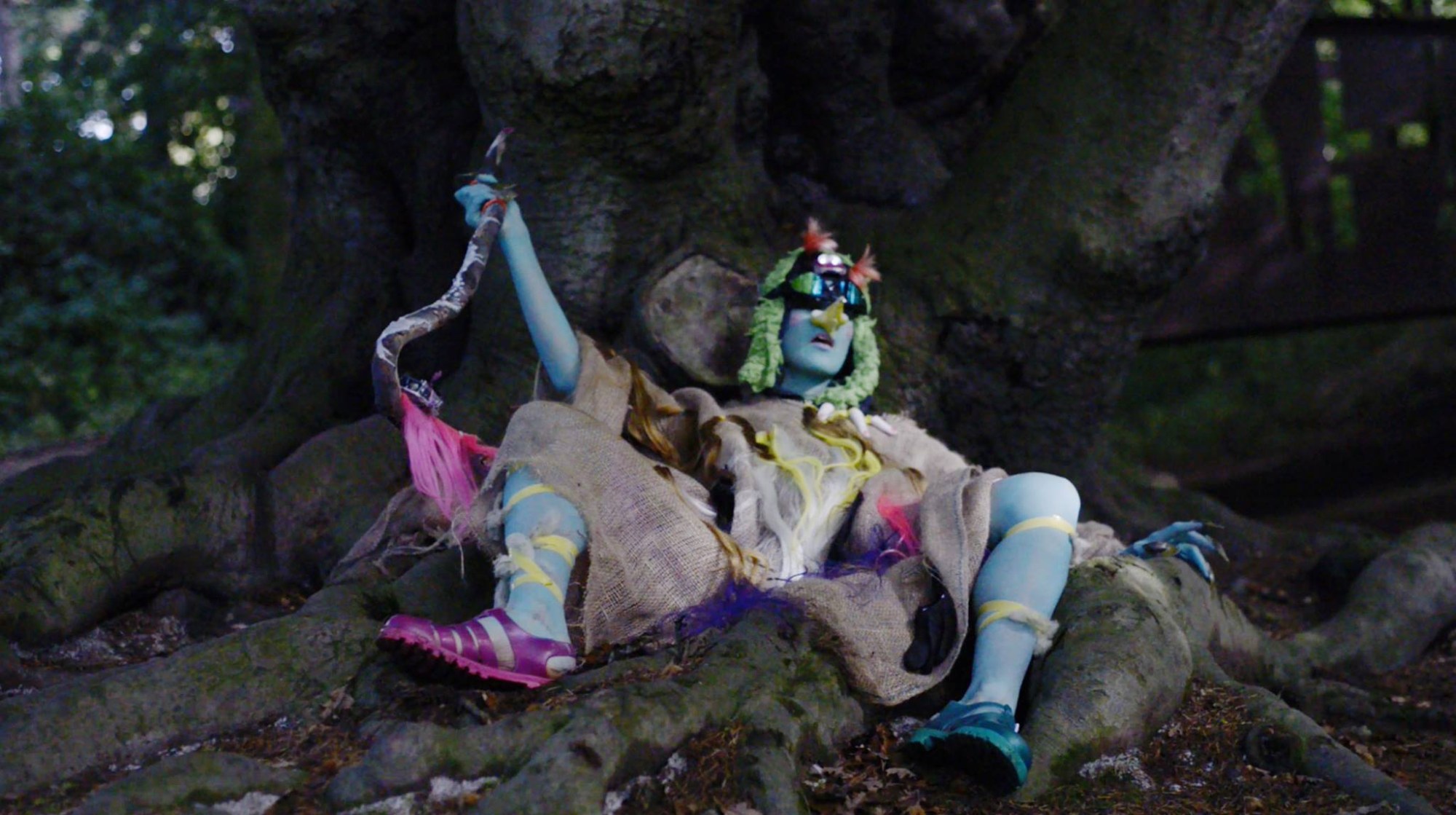
Ayesha Tan Jones
Ayesha is a queer, nonbinary artist living in London. They describe themselves as a sculptor, and although that can include more traditional forms of sculpture (in 2016 they were selected to be a resident at Yorkshire Sculpture Park), it encompasses a lot of mediums. Take, for example, Shadow Sistxrs Fight Club, a self defence class for QTIPOC, nonbinary and trans people run from various art spaces across London. The idea came from local community members being physically attacked, and while the workshops are about learning martial arts skills, there’s no macho culture, no competitive element, no hierarchy. “It’s a space where there aren’t expectations, just collective healing from trauma” ,” Ayesha says, “I think that’s really important in terms of survival.”
Scroll through the artist’s website and there are lots of examples of work they made as a teenager, before attending Central St. Martins in 2012. “I see that work as part of my evolution,” they explain, “I have been consciously creating an art practice since I was a kid and it’s been a mode of escape. I come from a very small town; it was the thing that I could find solace in before I moved to the big city. I had a teenage blog, where I posted drawings and art films I made, an exploration into my mental state at the time. But at art school putting that on display and having people critique it was like having someone critique your diary. I couldn’t handle it, so I evolved away from making personal work, and started creating characters and alter egos.”

Ayesha now has a whole host of characters that litter their work — they link this to the experience of being queer, a way of trying on identities, or “digital drag”. Una Jynxx is one of these characters, a young oracle mystic who was a vessel for Ayesha to play with gender. “She was very femme, girly, frilly. She had pigtails and wore glitter. She was very naive.” The characters never exist in real life, and although Ayesha would do live performances at art spaces, their characters would only appear through Skype.
Overall, their queerness has lead to an approach in their work that they describe as “optimystically dystopian” — a phrase they coined to describe the process of coming to terms with the fact that utopia is never going to happen because so many people in the world have their own visions of what it would look like. Or as the artist Jesse Darling put it: “The apocalypse has already happened, it’s just not evenly distributed.” Ayesha’s work looks to find methods of survival within this: “Shadow Sistxrs is something that I feel is optimystically dystopian because it’s working in the framework of a patriarchal, unbalanced society, where women, queer and nonbinary people are oppressed, but it’s creating a community, where you can build strength and allyship to fight back.”
Shadow Sistxrs are holding an event at the ICA on May 20th , and have a residency there in September.
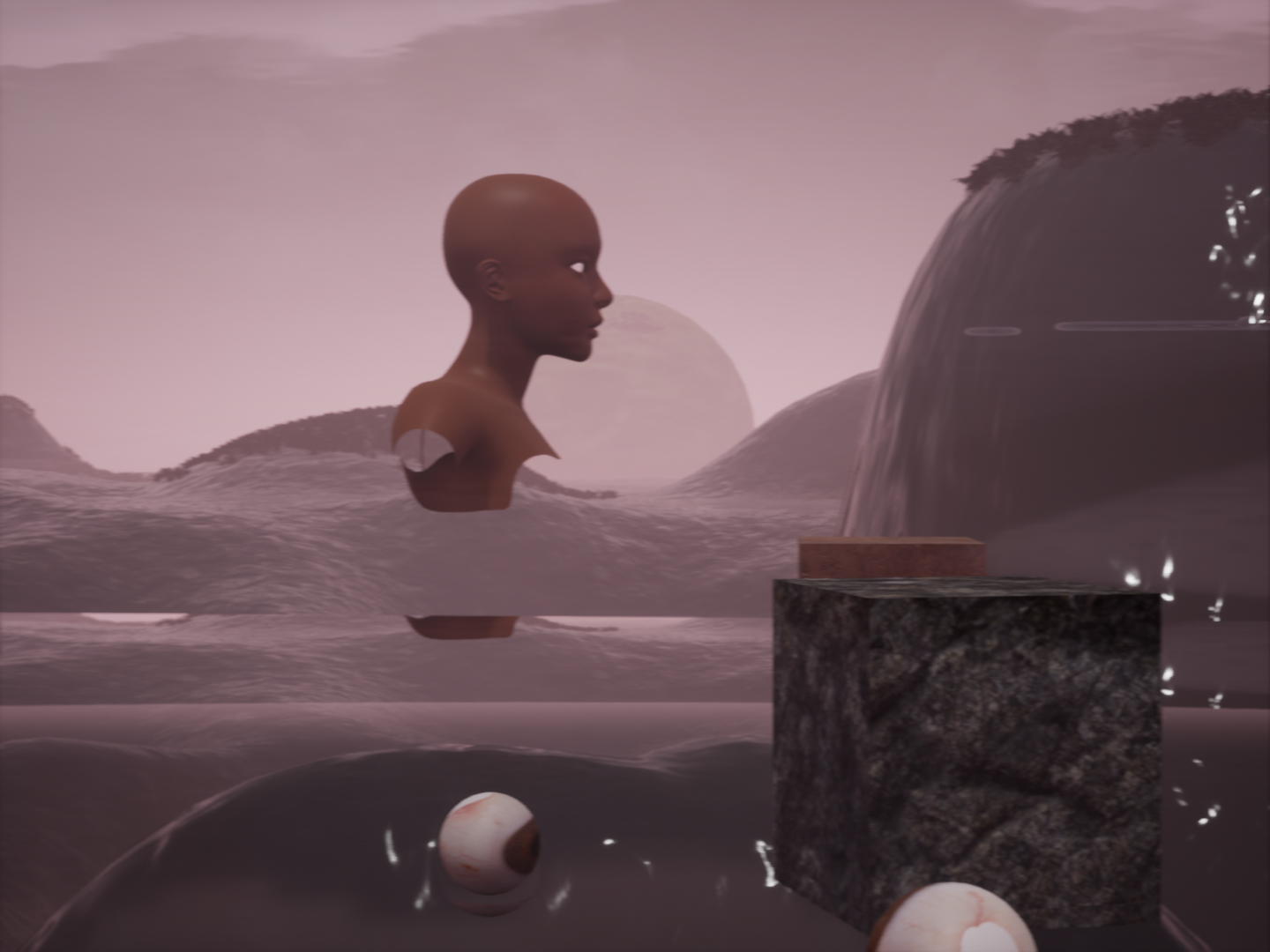
Rindon Johnson
I First You is the artist Rindon Johnson’s new work for the exhibition Queertopia. The video offers up an immersive new landscape of tiny virtual islands, the viewer’s perspective rotating around the space and over its spinning objects slowly — a decision inspired by Chantal Akerman’s film La Chambre — just like a moving still life. The score conjures yearning and longing, while a poem by Rindon is read aloud. Written after the 2016 US Election, Rindon says the poem is about the vulnerability experienced as a person of colour living in America, linking this to the wearing down of bodies and the wearing down of Rindon’s grandmother’s bed sheets over time. If you watch really carefully, you might also see Jacques Cousteau hunting for octopuses.
“Octopuses feature a lot in my work,” laughs Rindon, “mostly because they represent the other highest form of intelligence. The octopus is like this full nerve-feeling body, and I have always related to that feeling; I don’t just see something, I feel it all over. When one is queer or trans, I feel like we have this hyper-sensitivity to the world around us, of course out of fear about our safety — but also from being able to be incredibly observant and empathic, which is awesome and beautiful.”

Rindon lives and works between Brooklyn and Berlin, but are from San Francisco originally. At 18, they saw a Catherine Opie exhibition at the Guggenheim, a turning point in feeling not alone in being gender nonconforming and an artist. “Around then I started to have this obsessive practice. It’s like the only way I can funnel all the crazy sensations I’m feeling as a queer person and a trans person in the world today… it’s the only thing I’ve found that is cathartic. When something that’s painful or crazy or transphobic will happen on the street, I can immediately turn that into a painting and it’s gone. That gives me the clarity to keep working, to keep living and keep being alive.”
Recently, Rindon made the work Away With You, which plays with the avatars from NBA2K [a basketball video game]. Rindon started thinking about virtual reality as a way to make work about queer and racial politics; “As a queer, black body, I don’t really get to have a body with the same agency as other people sometimes. To be able to make a piece of art that can reconstruct that dynamic, or go even further, with the idea that you don’t need a body because you’re just floating in space, I think that’s fun to mess around with.”
Rindon Johnson’s I First You features in Daata Editions’ Queertopia, and Away With You is showing at FACT Liverpool

Adham Faramawy
Growing up in a single-parent Egyptian family in south west London and spending his teens in the small seaside resort of Great Yarmouth, Adham Faramawy started making work as a way to be by himself, and to plan his escape route via art school. It wasn’t that he felt directly marginalised in a mostly-white environment, but rather there was so little diversity it was an invisible issue. “At school, I didn’t necessarily have a language for queerness,” he adds, “but it is another thing I felt quietly marked me out as other.”
Adham went to the Slade School of Fine Art before working a series of rubbish part-time jobs (like giving out sweets in the street in a penguin costume), later graduating from the Royal Academy in 2013. He has gone on to have solo shows at Cell Projects in London and Bluecoat in Liverpool, as well as group shows and screenings with peers like Evan Ifekoya and Patrick Staff. It was at the RA that he started making technology as work in earnest — “Weirdly, because the Schools have historically supported such traditional media.” One of these was a two-part performance work, a take on an exercise video called Total Flex 2, where a naked man exercises in a psychedelic video with a custom designed browser. You could also download the performer as a computer program that let you take the performer out of the online video context to perform on your desktop.
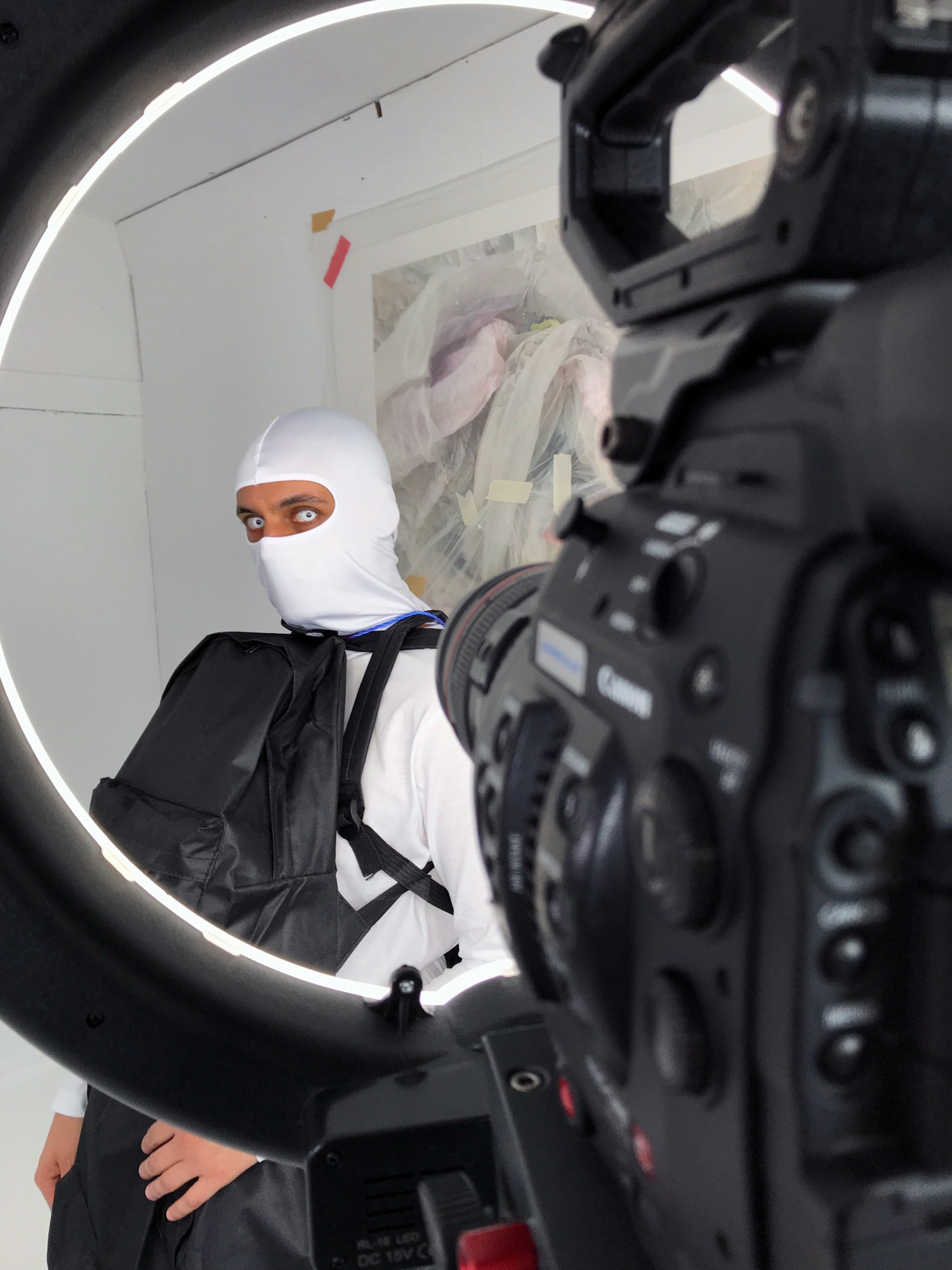
“Being a second generation immigrant, for me, means I haven’t quietly inherited a set of assumptions about culture and how I fit into it,” Faramawy explains, “I question every situation.” Adham’s videos question who’s in the room, who’s looking, who’s objectified, and over time, Adham’s identity as a queer artist has continued to primarily translate into a preoccupation with disrupting our assumptions around the cisnormative gaze. “My work is about bodies, but it’s also about who’s looking. We still take the male gaze for granted. What happens if we posit a queer subject position? Queerness isn’t one thing, or one type of person. For me this means making work that can accommodate a lot of perspectives.”
A recent video work builds on this idea; in Make Up Tutorial, Adham performs a YouTube style instruction video that starts to unravel, a ‘clown contouring’ video that backs up on itself. The make-up becomes cartoonish and a full body highlight transforms into foam and slime as Adham’s video starts to liquefy and eat the screen. He inhabits a commercial form but collapses it in on itself, asking; who is this for? “I don’t enjoy assumptions,” he reiterates, “I draw on science fictive and psychedelic tropes because they offer the potential to reconstitute how we think about bodies.”
Adham is currently working on a science fiction video for Collusion and doing a series of 360 performance videos for The Box, a new museum in Plymouth.
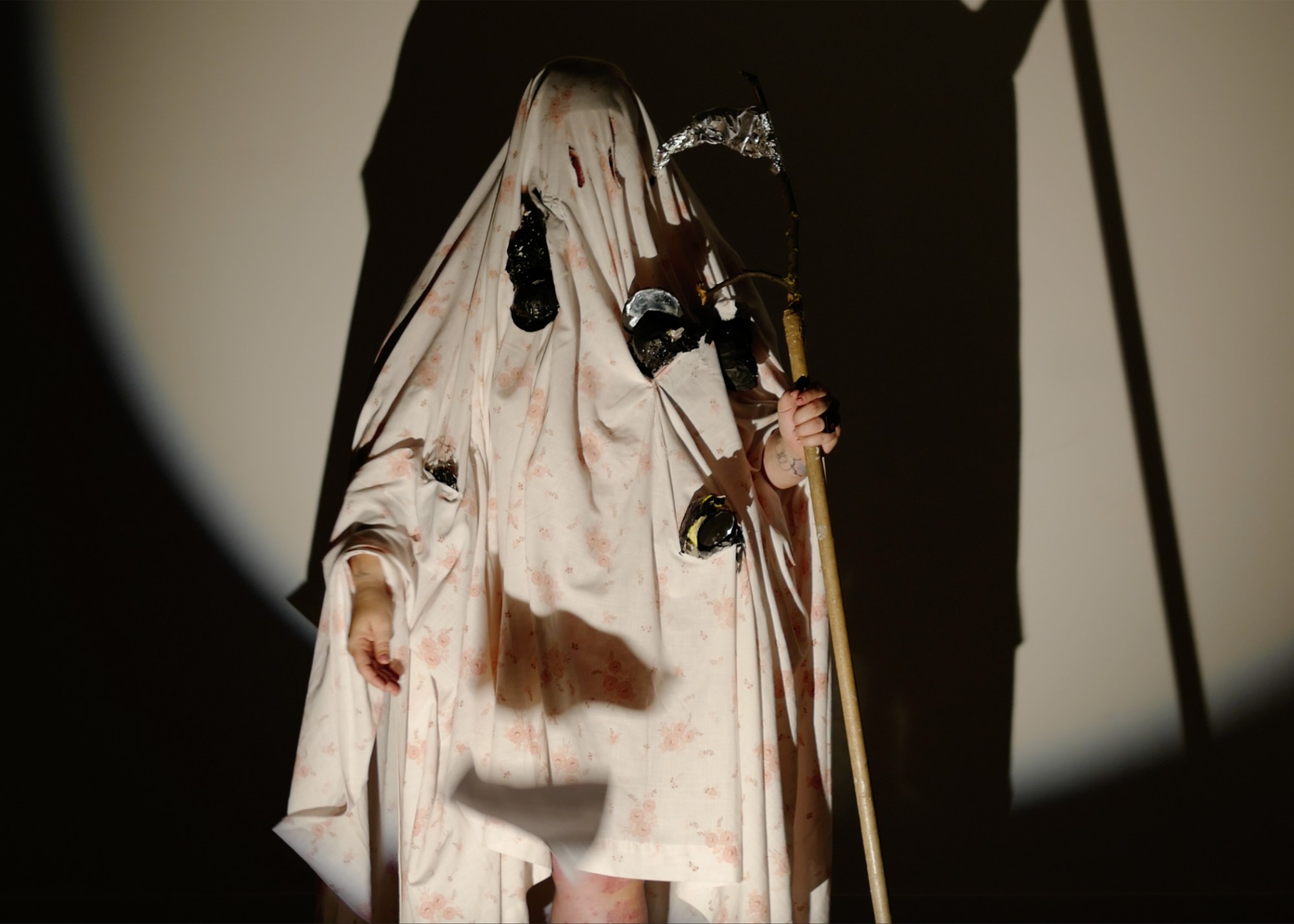
Linda Stupart
“I suffer from PTSD, so it’s something that’s very much part of my own materiality and everyday life,” says Linda Stupart, a queer, nonbinary artist, writer and educator from South Africa. “In my PhD thesis I thought a lot about the problems with a particular kind of survivor culture and its relation to therapy and the state, in particular CBT — I find the idea that one has to get over trauma, or be healed from trauma very violent, and rooted in a desire for a productive worker/subject. So, I’m excited by the radical potentials for the traumatised body.”
Linda’s work navigates the relationships between bodies, alienation, and violence — with a bit of magic thrown in. Their solo show at London’s Arcadia Missa in 2016 introduced the use of salt circles (a kind of ritual circle borrowed from witchcraft) into their practice as literal safe spaces from which to perform. These ideas have carried through into the project some men have mistaken me for death, which Linda recently performed as part of the Queer Futures series at Mimosa House. In that piece, traumatised bodies become time travel machines “because of the way PTSD splits and glitches between timelines in a person’s lifetime”. And in another performance, created with artist Travis Alabanza, Linda and Travis wrote a spell to protect each other, talking about the different kinds of everyday harassment they receive as people who have queer or trans bodies.
Linda is a contributor to the whereisanamendieta project, which archives the work of female and nonbinary artists, Linda is also concerned with addressing inequalities in gallery spaces, particularly by including QTIPOC artists in exhibitions and events. “Being white and middle class means my body is very easily inserted into galleries,” they reflect, “but I do think my fatness, my butchness, my skin condition, still has a disjunctive affect in a gallery.”
As for a work that tackles this topic head on? “My experimental science fiction book Virus is a very clear critique of white male dominated artworlds… I murder a bunch of men like Joseph Kosuth and, of course, [Ana Mendieta’s husband and alleged murderer] Carl Andre.”
Linda’s work is currently showing as part of Queer Futures at Mimosa House in London
